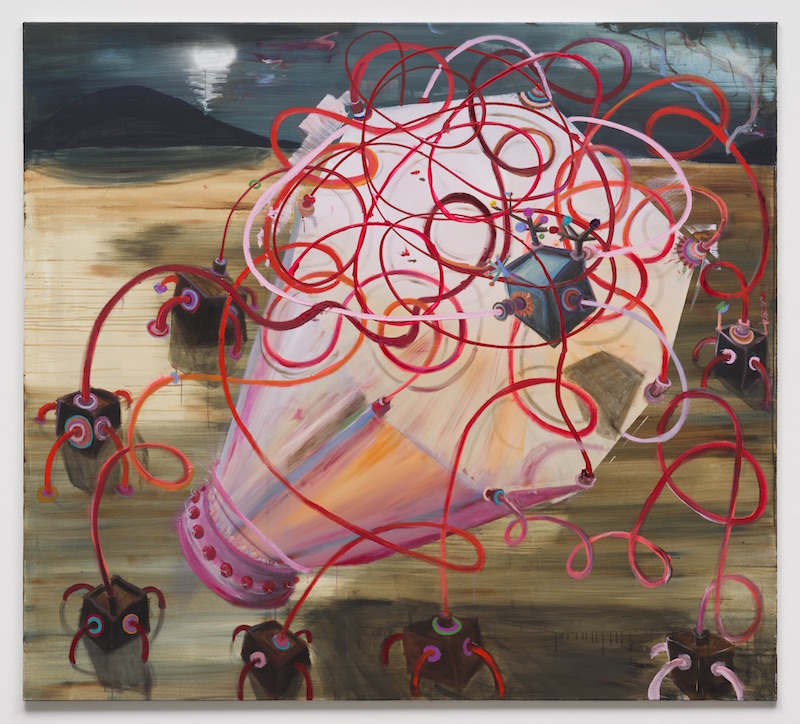
Philip Grözinger, Courtesy Galerie SEXAUER, Photo © Marcus Schneider
Set in an utterly dystopian landscape, the paintings of Berlin-based artist Philip Grözinger reveal an imaginative universe full of little machines, wired robots and rainbows. In this universe, human beings have become uniform, balloon'ish creatures, whose protective gear turn them into hybrids between man and machine. Despite their desolate setting the images do not convey any disillusion, but they are oddly light-hearted, poetic even, and a bit sarcastic at times. Since years, Grözinger has worked on different unnamed characters and scenarios of this phantasmagorical world, creating an infinite row of sci-fi sequences and visions of our "future archaeology." In our conversation he explains where his inspiration stems from.
Anna-Lena Werner: Your paintings often stage quite humorous scenarios with monsters and rainbow-spitting-machines, while at the same time they also have quite a sinister, even apocalyptic undertone. What are these grotesque places that you create?
Anna-Lena Werner: Your paintings often stage quite humorous scenarios with monsters and rainbow-spitting-machines, while at the same time they also have quite a sinister, even apocalyptic undertone. What are these grotesque places that you create?
Philip Grözinger: I see my paintings as sequences. Like in a continuing movie or a theatre piece, in which one still is supposed to capture an entire atmosphere. I am very influenced by dystopian films and by the poetic Russian movies of the 1970s – these are the backdrops of my paintings. This is how the grotesque evolves for me.
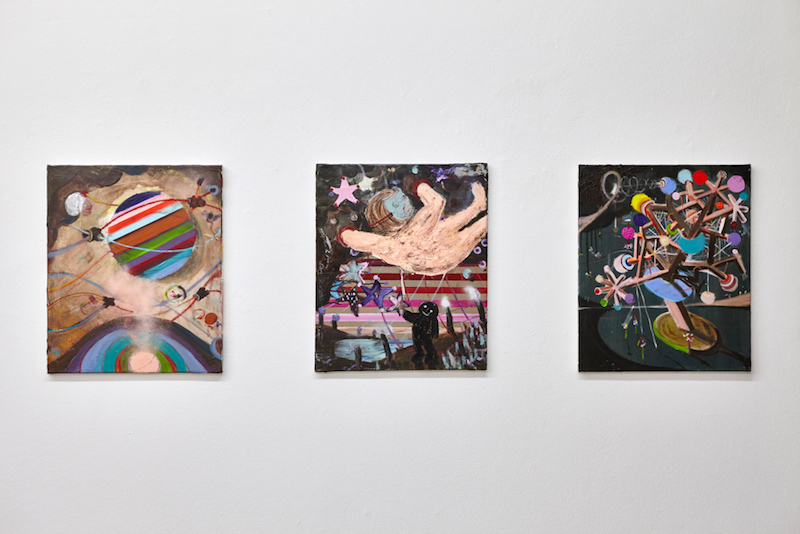
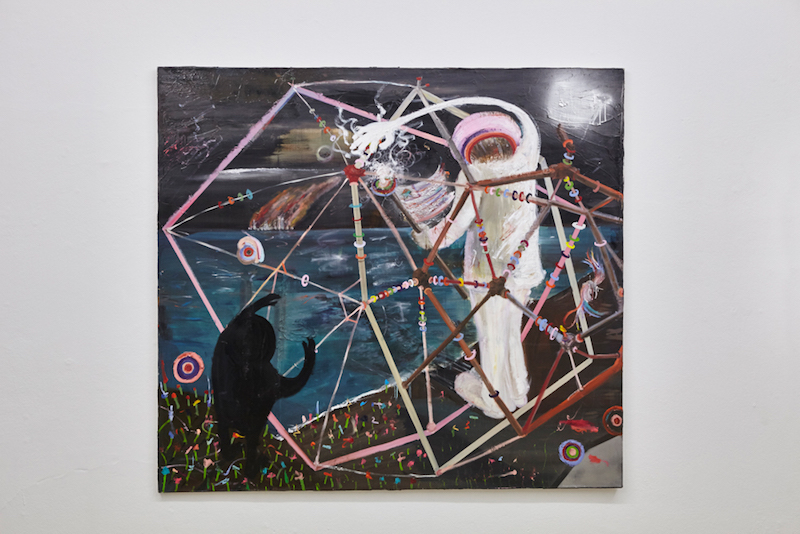
Philip Grözinger, courtesy Nicole Gnesa Galerie, München
ALW: Can you tell me a bit more about why these utopian and dystopian movies have been so inspiring you?
PG: It started with some of my children's books that I read in an early age. For example "Alice in Wonderland" and "The Last Man Alive" have been influential. I felt like these science fiction novels and films somehow reflected my hometown Braunschweig [Brunswick]. I grew up in the 70s and 80s in an area adjacent to the Soviet Zone. Braunschweig was one of the first cities that was supposed to be erased by American bombs, in order to maintain the Warsaw Pact. Moreover, at the time the first serious movies addressing the fight between man and machine appeared, such as "Westworld" oder "Logans Run". I had also been obsessed with the atmosphere of this French-Czech animation film "Fantastic Planet", although I didn't really understand it as a child. It was much later that I rediscovered it – thanks to the Internet.
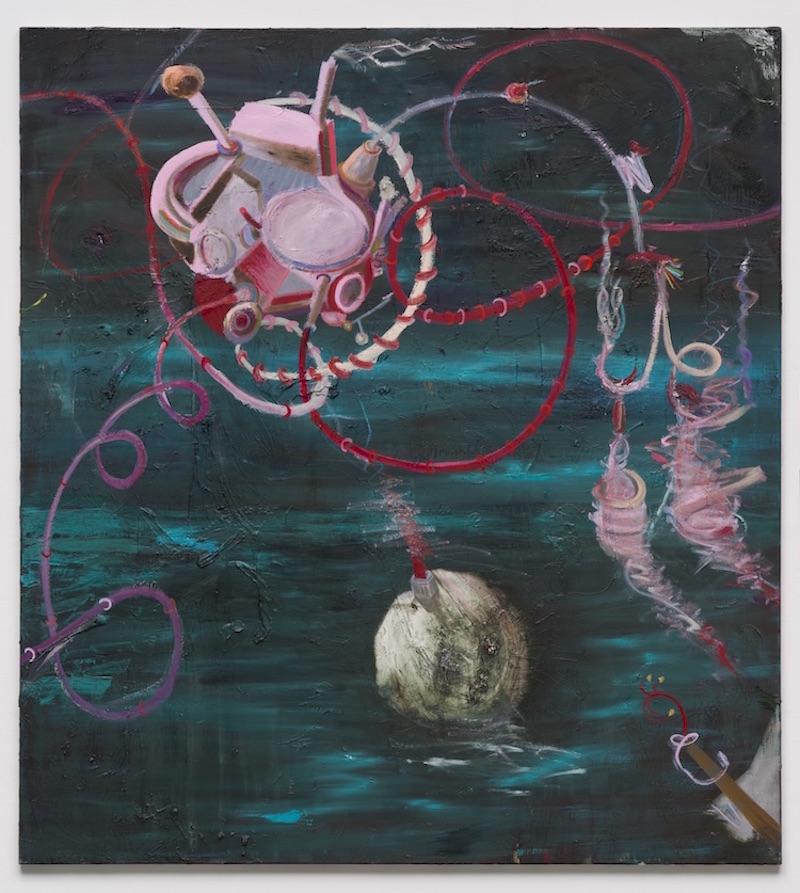
ALW: Have novels been important to you?
ALW: These worlds and scenes that you create in your paintings often have a narrative plot. Do you have an exact story and composition in mind when painting, or is it more abstract and intuitive?
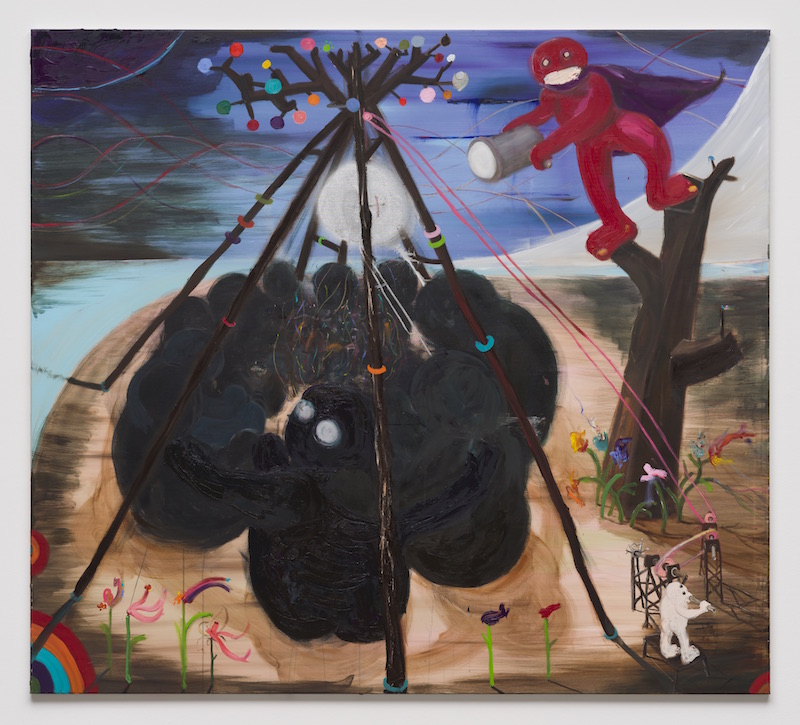
ALW: A little figure keeps on reappearing in your paintings – how autobiographical are your works?
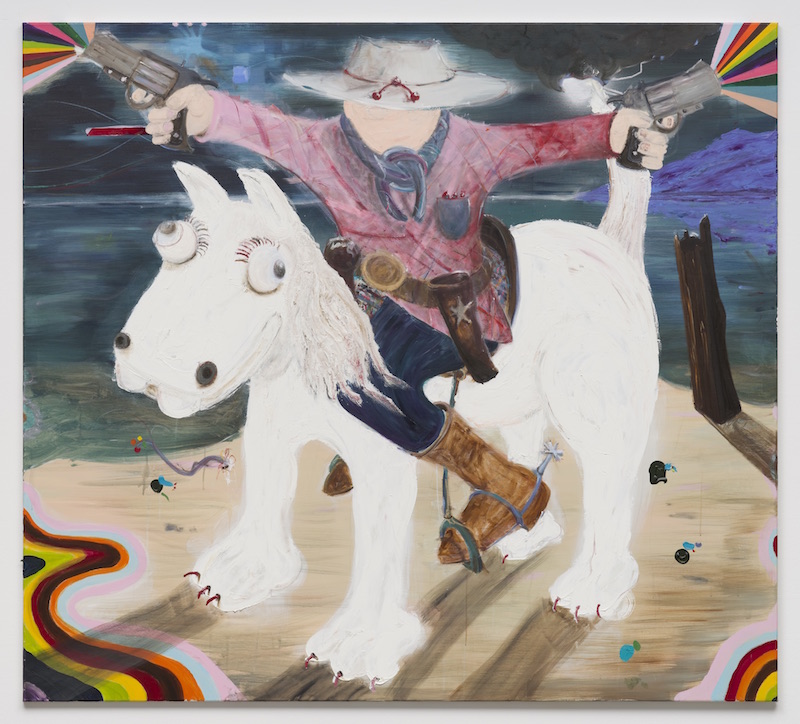
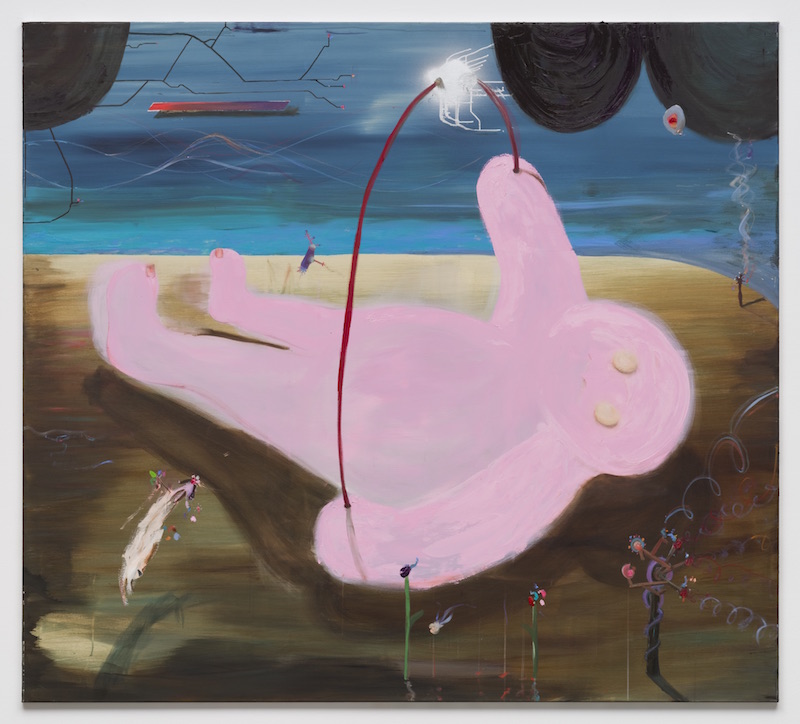
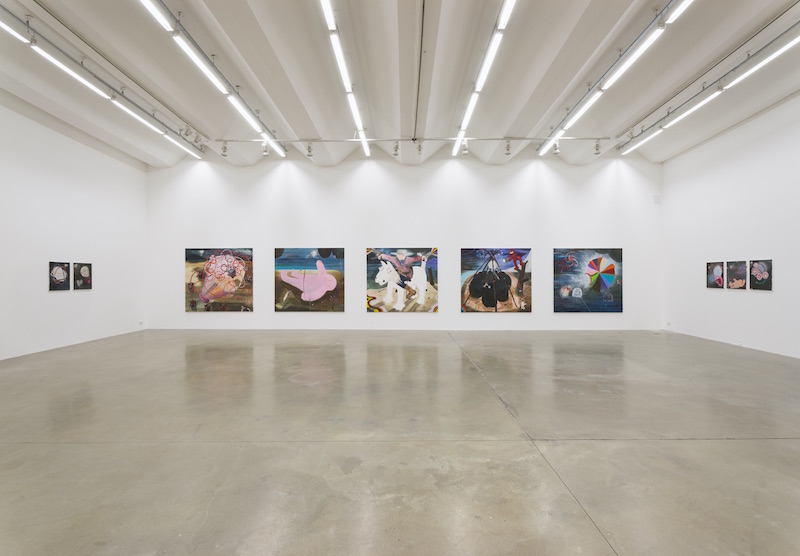
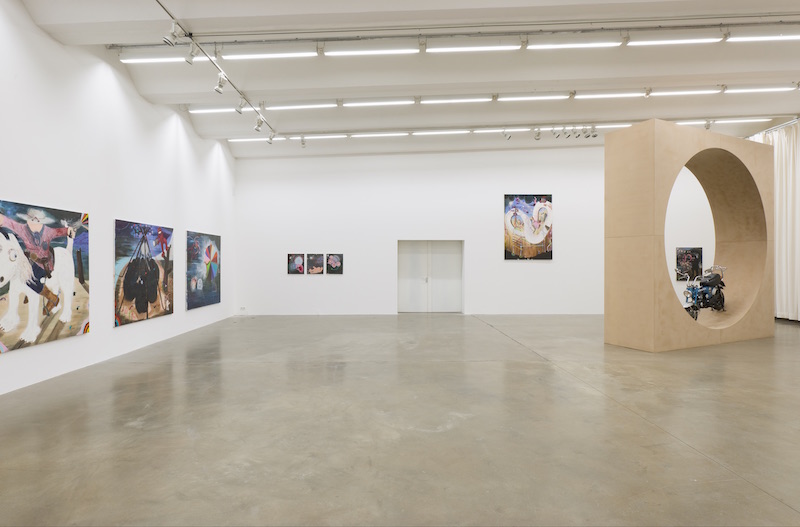

Philip Grözinger, Courtesy Galerie SEXAUER, Photo © Marcus Schneider
ALW: Have novels been important to you?
PG: For me, one of the most beautiful places in Braunschweig was the public library, where I read myself through the entire section of science fiction. Once I discovered the violet coloured series from the publisher Suhrkamp. That is how I got in contact with Stanislav Lem and the Brothers Strugazki, and that led me to the traces of Soviet speculative fiction. My whole family likes to read and that affected my greatly. Thanks to my English mum, I developed an interest in classic literature, such as Brave New World by Aldous Huxley and the books from H.G. Wells. I still read a lot, but not exclusively science fiction anymore.
ALW: What do you currently read?
PG: I re-read "Solaris" by Stanisław Lem and "Als wir traeumten" by Clemens Meyer.
ALW: These worlds and scenes that you create in your paintings often have a narrative plot. Do you have an exact story and composition in mind when painting, or is it more abstract and intuitive?
PG: It is an idea of a painting, rather than a concrete conception. I only know the feeling that needs to find an expression. I have to feel my way, as if it was a labyrinth. In this process I sometimes put some paintings on the side when I get on the wrong track and get stuck. This happens when I distance myself too far from the feeling that I desire to express. But sometimes, quite suddenly, there is a solution. Often that happens weeks later. This feeling-my-way is what brings me the biggest pleasure.
ALW: One recurring motif in your works are machines: these objects have tubes and seemingly electric cables, they float in the air like a bubble or the shoot something out like a canon. What is their function? Do they stand for something?
PG: These machines are about a kind of future archaeology; about the question of the what-will-remain-from-us. I like this idea of artefacts that are resistant to unravelling, just standing around without any purpose. There is a poem by Percy Bysshe Shelley called "Ozymandias". It captures the what-will-remain-from-us theme quite beautifully.

Philip Grözinger, Courtesy Galerie SEXAUER, Photo © Marcus Schneider
ALW: A little figure keeps on reappearing in your paintings – how autobiographical are your works?
PG: They are not really autobiographical. I use these figures like a director places his actor. The figures, like the title, are meant to intensify or thwart certain things.
ALW: Throughout the last years you have stayed quite true to the choice of colours, and repetitively employed black and pink as two extreme opposites. Have you ever considered changing the palette, or are these colours a substantial part of your work?
PG: It's funny – I do consider my choice of colours very harmonious. I work very long and very happily on the selection of colours until it satisfies me. Currently I try to overcome my fear of yellow, in order to expand my palette. I really enjoy using colours that I previously couldn't manage.
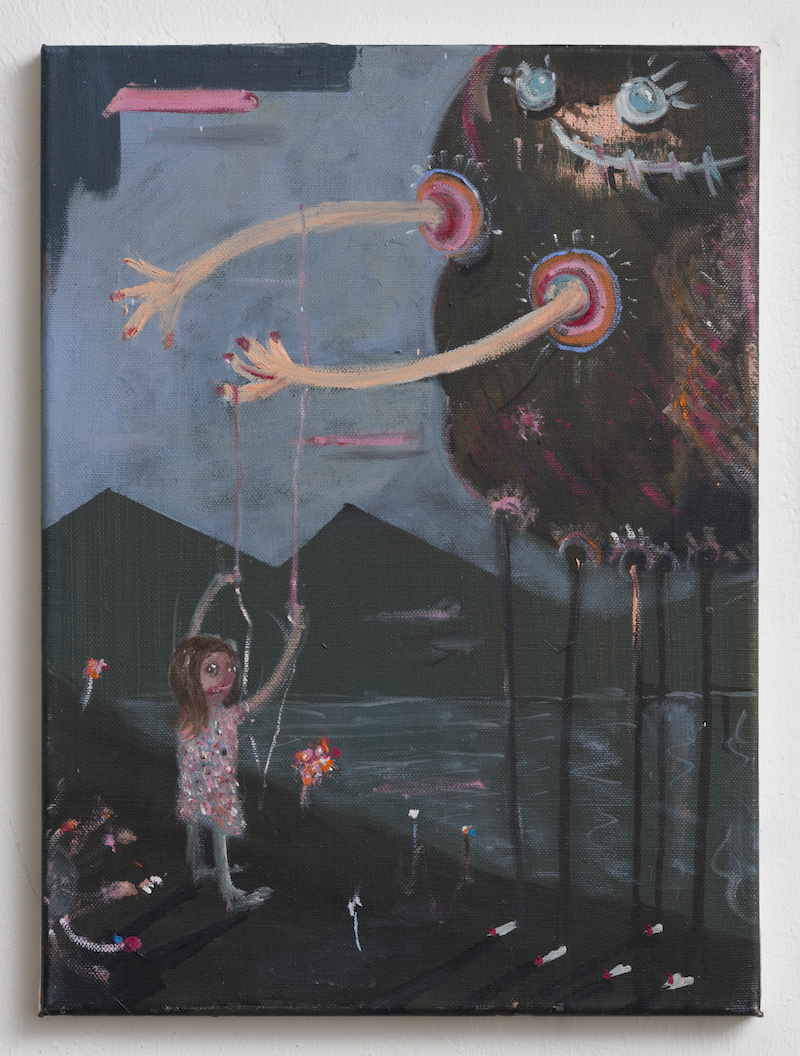



Philip Grözinger, Courtesy Galerie SEXAUER, Photo © Marcus Schneider
ALW: You also make prints. How is that practice different from painting?
PG: It's completely different, because my prints are always carefully planned. From the first sketch to the transfer on the printing plate – the realisation is completely thought through, because the way I work, the so-called lost cut, doesn't forgive any mistakes. But this challenge is exactly the reason why I enjoy doing prints.
ALW: How about your many curatorial activities? What drives you to organise shows?
PG: I think it is important that artists create networks and that they are not wasting away alone at the studio. The nicest opportunity for that is to do exhibitions together. Sometimes that can get a bit out of hand, like in the show I just organised in Leipzig at Laden für Nichts. I asked participating artists to invite another artist who they appreciate. Like that, I can automatically expand my own data base of artists. Another recent example is an exhibition I did at Haus am Lützowplatz in Berlin. They requested me to curate a show and I considered it a challenge not to make a painting exhibition, because I am really interested in every aspect of art. I am just happy to organise exhibitions that haven’t been done before and to discover artistic positions that I didn’t know before.
Current Exhibition
PHILIP GRÖZINGER
OUT OF THE CORNER OF MY EYE
7.4 - 13.5.2017
Galerie Nicole Gnesa
Kolosseumstr. 6 | Innenhof
80469 München
Opening Hours: Thu-Fri 16-19h, Sat 11-16h
ALW: How about your many curatorial activities? What drives you to organise shows?
PG: I think it is important that artists create networks and that they are not wasting away alone at the studio. The nicest opportunity for that is to do exhibitions together. Sometimes that can get a bit out of hand, like in the show I just organised in Leipzig at Laden für Nichts. I asked participating artists to invite another artist who they appreciate. Like that, I can automatically expand my own data base of artists. Another recent example is an exhibition I did at Haus am Lützowplatz in Berlin. They requested me to curate a show and I considered it a challenge not to make a painting exhibition, because I am really interested in every aspect of art. I am just happy to organise exhibitions that haven’t been done before and to discover artistic positions that I didn’t know before.
Current Exhibition
PHILIP GRÖZINGER
OUT OF THE CORNER OF MY EYE
7.4 - 13.5.2017
Galerie Nicole Gnesa
Kolosseumstr. 6 | Innenhof
80469 München
Opening Hours: Thu-Fri 16-19h, Sat 11-16h




Philip Grözinger, Courtesy Galerie SEXAUER, Photo © Marcus Schneider
